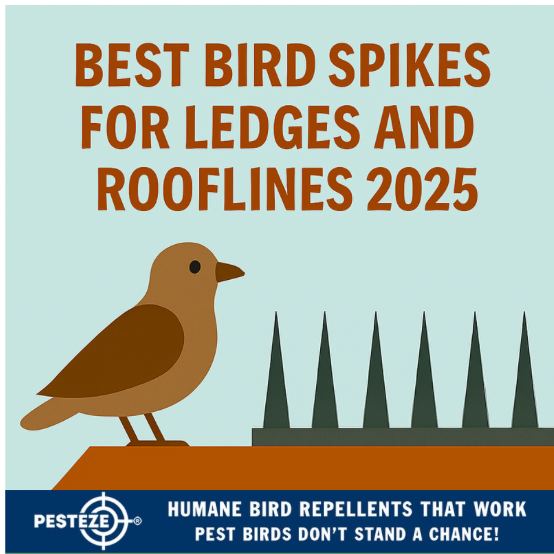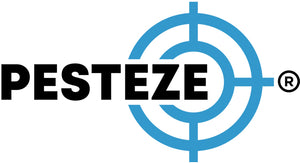BEST BIRD SPIKES FOR LEDGES AND ROOFLINES 2025

BEST BIRD SPIKES FOR LEDGES AND ROOFLINES 2025
SUMMARY
Bird spikes remain one of the most effective physical deterrents for preventing birds from landing on ledges, rooflines, and architectural features. This comprehensive guide reviews the latest 2025 bird spike technologies, materials, and installation methods to help you choose the most effective solution for your specific application.
FEATURES
- Material Comparison: Stainless steel, polycarbonate, and hybrid spike systems with durability analysis.
- Installation Methods: Professional mounting techniques for various surfaces and architectural features.
- Aesthetic Integration: Low-profile and nearly invisible spike options that maintain building appearance.
- Weather Resistance: UV-stable and corrosion-resistant materials designed for long-term outdoor use.
- Species Effectiveness: Spike configurations optimized for different bird sizes and behaviors.
- Cost Analysis: Value comparison between premium and budget spike systems over time.
GUIDE DESCRIPTION
Bird spikes create uncomfortable landing surfaces that effectively discourage birds from perching without causing harm, making them ideal for ledges, rooflines, signs, and architectural features where other deterrents may be impractical. 2025 spike technology offers improved materials, installation methods, and aesthetic integration compared to earlier generations.
Stainless steel spikes represent the premium standard for durability and effectiveness. 316-grade stainless steel construction provides superior corrosion resistance in coastal and industrial environments, while precision-formed tines maintain consistent spacing and angles over years of exposure. Modular base systems allow easy installation and replacement on various surface types.
Polycarbonate spike systems offer cost-effective protection with excellent UV resistance and flexible installation options. Clear and colored variants provide aesthetic integration with building materials, while snap-together designssimplify installation for DIY applications. Polycarbonate durability has improved significantly, with quality systems lasting 10+ years in most climates.
Hybrid spike technologies combine stainless steel tines with polycarbonate bases to optimize both performance and cost. These systems offer professional-grade effectiveness at moderate price points while maintaining easy installation characteristics. Modular configurations allow customization for specific ledge widths and bird species.
Installation considerations vary significantly based on surface materials and architectural features. Concrete and masonry ledges require masonry anchors and weatherproof adhesives, while metal surfaces benefit from magnetic mounting systems or mechanical fasteners. Proper spacing and overlap ensure continuous protection without gaps where birds might land.
Spike density and configuration should match target bird species and landing behaviors. Narrow 1-inch spacingeffectively deters small songbirds, while wider configurations work better for larger species like pigeons and gulls. Multi-row installations on wide ledges provide comprehensive coverage and prevent birds from landing between spike rows.
Aesthetic integration has become increasingly important in 2025 spike design. Low-profile systems minimize visual impact from ground level, while color-matched options blend with building materials. Transparent polycarbonate spikes become nearly invisible at distance, maintaining architectural aesthetics while providing effective deterrence.
Weather performance varies significantly among spike materials and designs. Stainless steel systems handle extreme temperature cycles and corrosive environments without degradation, while quality polycarbonate spikes resist UV damage and thermal expansion that can compromise cheaper alternatives. Proper drainage design prevents ice buildup that can damage spike systems in freezing climates.
Maintenance requirements differ based on spike materials and environmental conditions. Stainless steel spikes require minimal maintenance beyond periodic debris removal, while polycarbonate systems benefit from annual cleaning to maintain transparency and deterrent effectiveness. Inspection schedules help identify loose fasteners or damaged sections before birds exploit weaknesses.
Cost-effectiveness analysis should consider total lifecycle expenses rather than initial purchase price. Premium stainless steel systems offer 20+ year lifespans with minimal maintenance, while budget alternatives may require replacement every 3-5 years. Installation costs favor DIY-friendly polycarbonate systems over professional-grade stainless steel installations.
Professional installation is recommended for complex rooflines, high-elevation work, and warranty-sensitive applications. Certified installers ensure proper fastening, weatherproofing, and aesthetic integration while maintaining building warranties and safety compliance. DIY installation works well for simple ledge applicationswith appropriate safety precautions.
- Pukhraj Sharma


Comments 0